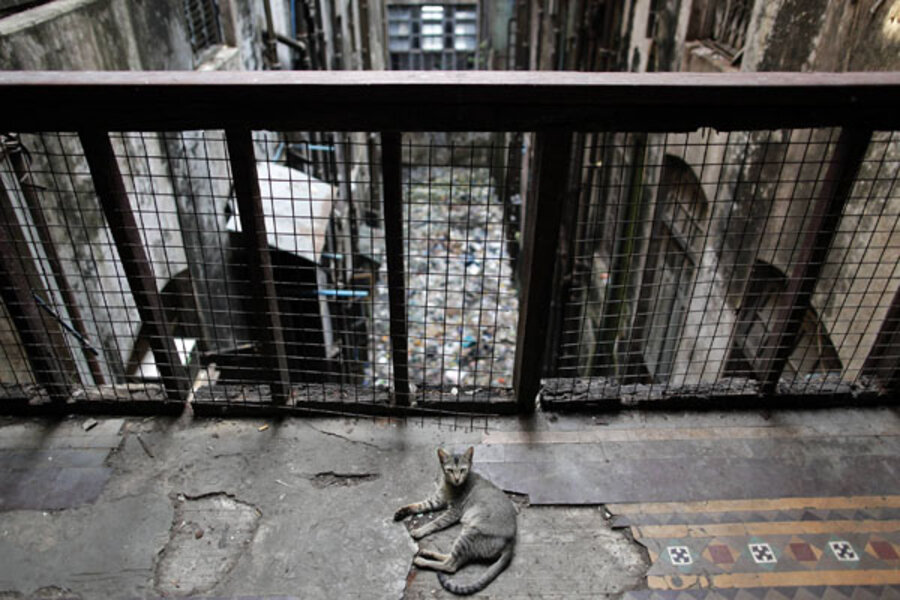Myanmar to preserve buildings of the British Raj
Loading...
| Yangon, Myanmar
Before it was subjected to more than 40 years of military rule, Yangon was a cosmopolitan port city and one of the great trading posts of the British Empire. It prided itself on attracting the world’s leading intellectuals, artists, and writers. Rudyard Kipling, Somerset Maugham, Noël Coward, Pablo Neruda, and George Orwell all penned verse and prose based on their experiences living there and the magnificent architecture that surrounded them.
Now, as the country opens up and the economy – stagnated by years of sanctions – rapidly recovers, the city’s historical sites are at risk of being bulldozed in the name of progress. But a flurry of interest in preserving and renovating some of the finest examples of colonial era architecture has won the support of the government, highlighting a growing readiness to reconnect the country to its past and the lure of potential financial gain from such projects.
While the campaign to protect historical sites has been widely praised and supported both inside Myanmar and abroad, real estate experts caution investors against rushing into large-scale restoration projects until planning and investment regulations are more firmly established.
“In Yangon transparency is still very low,” says Chris Fossick, managing director of Jones Lang LaSalle in Singapore and Southeast Asia. “The legal system is not totally clear, nor is the foreign investment law clear or finalized so to a certain extent investors are taking a step into the unknown.”
In January 2012, local historian and author Thant Myint-U set up the Yangon Heritage Trust to raise public awareness of the importance of the city’s architecture and persuade the government to introduce a law to protect it.
“Hundreds of buildings from the colonial era and earlier have already been destroyed,” due to rampant development he says. “If we don’t act now to save what’s left, Yangon could lose its connection to the past.”
He estimates there are between 40 and 50 buildings from the colonial era or earlier still standing in downtown Yangon. Skyrocketing land prices means the value of the plots the old buildings stand on rises every month, making them increasingly vulnerable to development.
Among the old buildings listed for protection is the Sofaer Building, designed by a Jewish émigré from Baghdad and once home to the cosmopolitan Vienna Cafe, where high society in Burma came to buy pastries and talk politics. Nearby is the Secretariat building, once the nerve center of British colonial rule and later the site upon which Gen. Aung San, father of opposition leader Aung San Suu Kyi, was gunned down with most of his cabinet in 1947. There’s also an Armenian Church built in the 1850s; the Currency Building, still scarred from being bombed in 1942; and the old Supreme Court, the seat of justice under British and Burmese rule.
Many of the buildings, owned by the government, were abandoned when the capital was moved from Yangon to Naypyidaw in 2005. They stand half dilapidated and empty or have become homes for squatters. Others are privately owned and leased out to businesses or turned into flats.
In February 2012, Thant Myint-U and his colleagues presented a proposal to the Burmese president to conserve the buildings under the Burmese law for tourism and for history.
“We told him Yangon is at a watershed in terms of its future. We said we have an opportunity now to do something very few cities in Asia have done.”
It was a gamble because of the country's record of suppressing the past. However, to their surprise President Thein Sein accepted it.
Since then, interest in conserving the buildings has risen sharply, with offers of support coming in from foreign governments, wealthy individuals, companies, and charitable foundations. Some like Philips – the electronics company – who offered to help light some of the buildings at night with LEDs, have commercial interests in moving into the market in Myanmar. Others, like the government of Switzerland, expressed an interest in leasing a building to renovate and to turn it into an embassy.
Most of these projects, says Mr. Thant Myint-U, are nothing more than proposals or are in very early stages of planning. They will depend heavily on city zoning plans and property and investment laws currently being drawn up by the government and could take years before they come to fruition.
The show of interest, however motivated, has sparked genuine hope among locals and internationals that Yangon could retain some of its historical charm and character while continuing to modernize.
“At first people were happy to see the back of colonial rule and didn’t want to preserve it but now there’s an understanding that the past is important,” says Thant Myint-U.
Financial returns on any such project won’t be clear, say analysts like Mr. Fossick, until the political and economic situation in Myanmar stabilizes.
“There are greater chances here [than in more developed economies in Asia] that things might change again quickly and that risk is going to have to be priced in,” says Fossick.
Luc de Waegh, managing partner of the Myanmar business advisory company West Indochina, agrees.
“People are right to get excited but they also need to be realistic," he says, explaining that investors need to consider factors including a stymied skilled work force inside Myanmar, a limited manufacturing sector, and poor telecommunications.
“Political change happened much faster than people thought it would but it’s going to take longer for the economy to mature, says Mr. Waegh. “At first we saw a lot of people coming here with unrealistic expectations – venture capitalists who thought they’d found the Wild West of the Far East. What we’re likely to see now is much more serious people who can afford to take a long term approach.”





